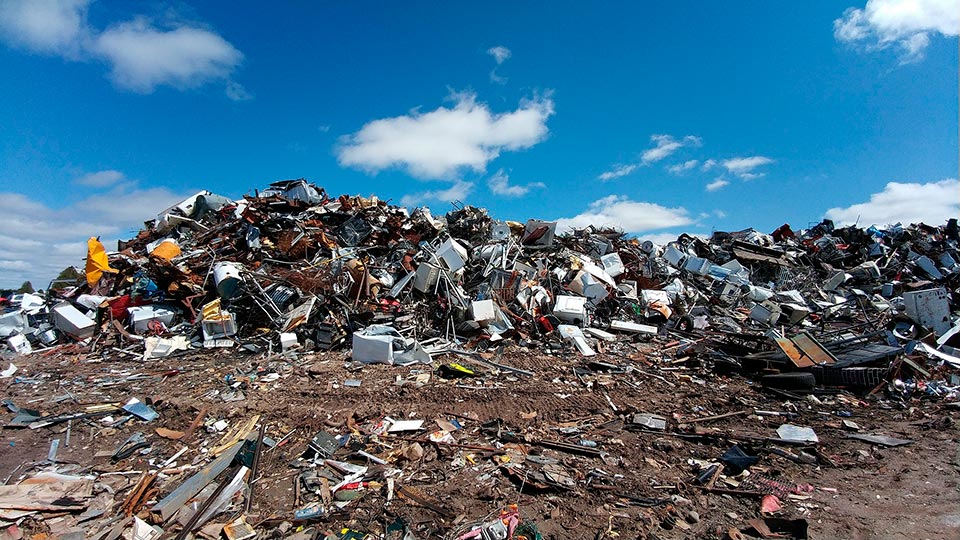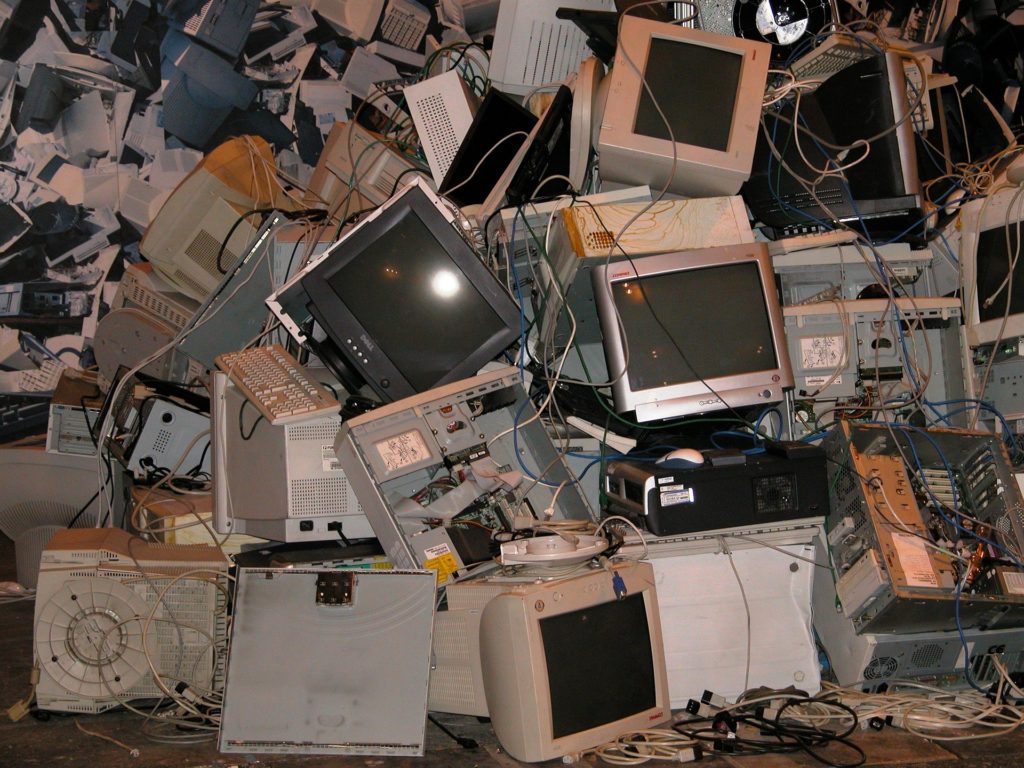What You Should Know About E-Waste

Earth month is coming to an end, but it’s imperative that we continue working together to properly recycle unwanted electronics in an effort to reduce e-waste.
What is E-waste?
Electronic waste, often referred to as e-waste, is defined as any electronic item that is no longer wanted or is obsolete, whether it works or not. Televisions, VCRs, DVD players, cameras, stereo equipment, mobile phones, tablets, computers, computer components, printers, and cords all become e-waste once they are no longer wanted.
E-waste continues to grow as technology becomes more integral to our daily lives, and device life spans become shorter in an effort to sell more products. E-waste is the fastest-growing component of the world’s domestic waste stream; according to the United Nations, 20 to 50 million metric tons are discarded globally each year. The U.S. produces 9.4 million tons of e-waste each year alone.
Nearly 100 percent of e-waste is recyclable, but only 12.5 percent is actually being recycled in the U.S. according to the EPA. E-waste represents just 2 percent of America’s waste in landfills but makes up 70 percent of overall toxic waste.
E-waste is Toxic
Some of the most common items considered to be hazardous are CRT, LCD, and Plasma screen televisions and monitors. Old cathode ray tube (CRT) televisions and monitors contain approximately 4 to 8 pounds of lead; improper disposal of monitors can cause neurotoxins to leach into the ground, contaminating our water supply.

The most common toxic materials found in electronic waste include:
• Mercury – Even low doses of mercury may cause kidney and brain damage.
• Lead – Exposure to lead can cause severe brain damage (particularly in children).
• Beryllium – Many motherboards contain beryllium, a known human carcinogen that damages the lungs when breathed in.
• Brominated Flame Retardants (BFRs) – BFRs negatively affect hormonal functions essential for normal development.
• Cadmium – Cadmium has been shown to cause cancer and kidney damage when it accumulates in the body.
By following proper disposal methods, the average American household can prevent 176 pounds of e-waste from ending up in landfills every year. In 2018, InterConnection prevented 1,083,199 pounds of e-waste from ending up in landfills or being dumped in developing nations thanks to the citizens and corporations who responsibly recycled their e-waste with us.
E-waste Toxins Affect Millions
Precious metal recovery is a valuable part of the e-waste recycling process. The EPA stated that 35,274 pounds of copper, 772 pounds of silver, 75 pounds of gold, and 33 pounds of palladium can be recovered from just one million cell phones through recycling. Unfortunately, precious metal recovery from unwanted electronics is often outsourced to developing nations in Asia or Africa- where recycling practices lack regulation.
Until last year, China accepted 70 percent of the world’s electronic waste. Once transported to regions like Guiyu (considered the e-waste capital of the world), workers recover valuable materials from electronics by burning devices to melt away non-valuable materials and using cyanide and nitric acid to recover gold. With few environmental safety regulations, e-waste toxins contaminate the air, soil, and groundwater- resulting in an extremely high rate of lead poisoning among children in the region.

Since banning shipments of waste from entering China in 2018, North American and European countries began shipping more e-waste to Southeast Asian countries like Malaysia, Vietnam, and Thailand, whose ports are overwhelmed by the influx of waste.
There is a Lack of Regulation
A study conducted by Basel Action Network, a watchdog group working to combat the export of toxic waste from technology and other products from industrialized societies to developing countries, found through the use of tracking devices that 40 percent of the e-waste supposedly recycled in the U.S. was actually exported to other countries, many of them developing nations where recycling practices are unlicensed and unregulated.
There is currently no federal law in the U.S. that forbids e-waste from being exported to developing nations. This lack of regulation regarding the safe disposal of electronics encourages bad practices in both the recycling and manufacturing industries. For example, it has become commonplace for electronic device manufacturers to speed up the obsolescence of their products by updating designs or software and discontinuing support for older models, causing e-waste to further accumulate while electronics companies continue to profit from steady sales.
Using your electronics for longer and repairing broken devices rather than purchasing new ones, encourages manufacturers to slow down production and release cycles. Organizations like IFIXIT.ORG are also working to protect consumers ‘Right to Repair’ their devices without voiding product warranties.
How You Can Reduce E-Waste

• Don’t throw electronic devices, accessories, or cords in the trash– Prevent toxins from leaching into the ground and contaminating our water supply while helping to stimulate the economy; compared to disposal in landfills or by incinerators, reusing or recycling computers can create 296 more jobs per year for every 10,000 tons of computer waste processed.
• Donate your unwanted electronics to a local charity that can refurbish and reuse devices – It is our mission to Bridge the Digital Divide; donating your e-waste to InterConnection helps both the environment and the community when your computers are able to be refurbished and reused by those needing access to technology.
• Recycle your unwanted electronics – InterConnection accepts unwanted electronics for reuse and recycling year-round.
• Repair your broken devices – Expanding the life of your devices will save you money, and lessen your contribution to e-waste. InterConnection repairs PCs and Apple computers at affordable rates at our retail store.
• Support the Right to Repair- Learn more about how you can get legislation passed at REPAIR.ORG.
• Buy used instead of new – It takes 530 pounds of fossil fuel, 48 pounds of chemicals, and 1.5 tons of water to manufacture one computer and monitor according to the Electronics TakeBack Coalition. You can prevent the need to manufacture additional computers and monitors and save money when you shop with a reputable refurbisher. InterConnection is a Microsoft Registered Refurbisher and offers a free one-year warranty on all computers.
